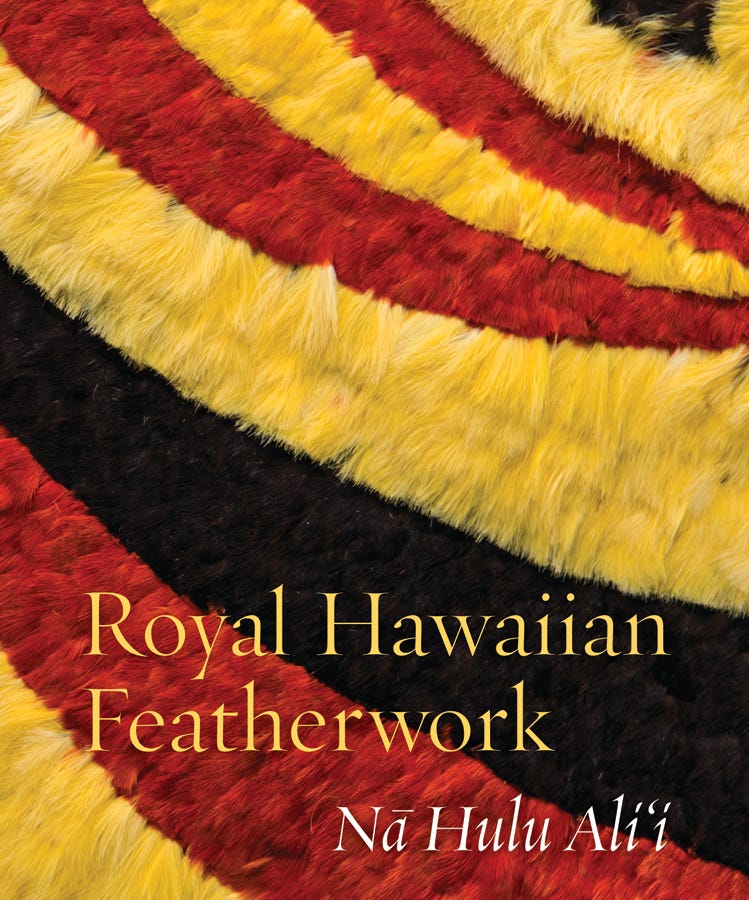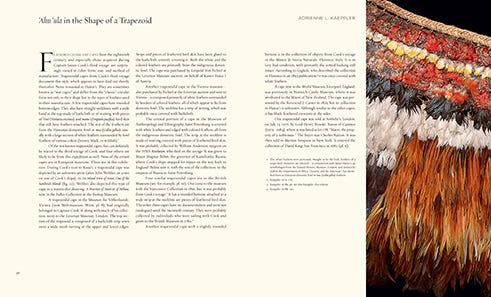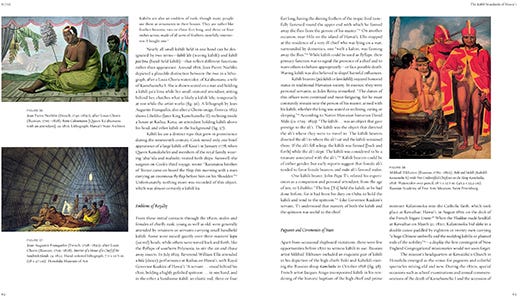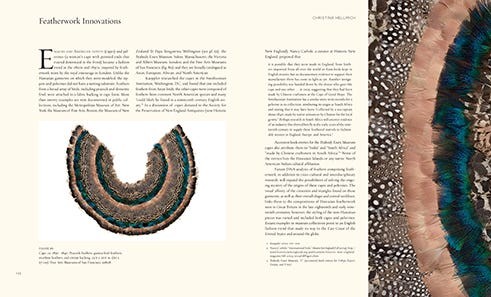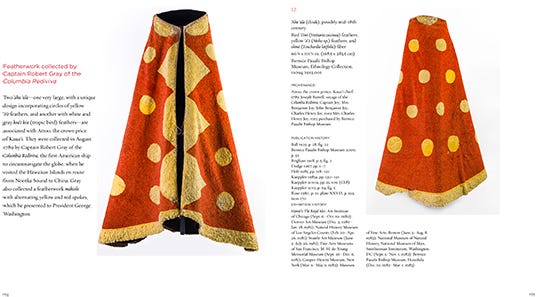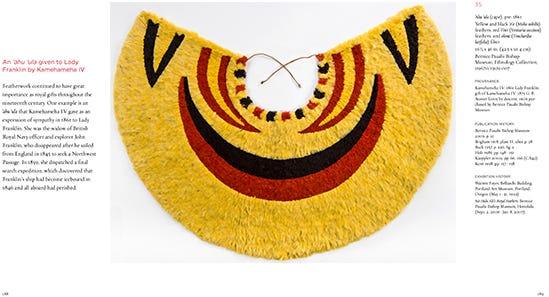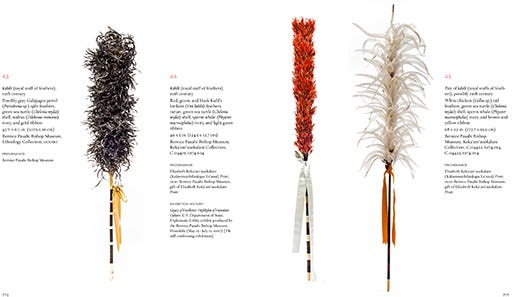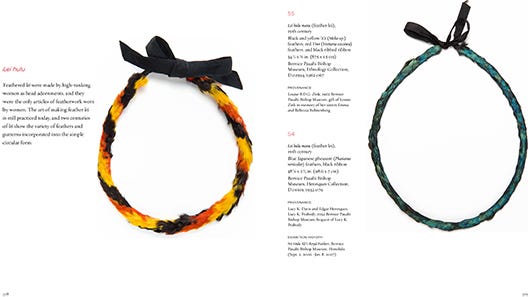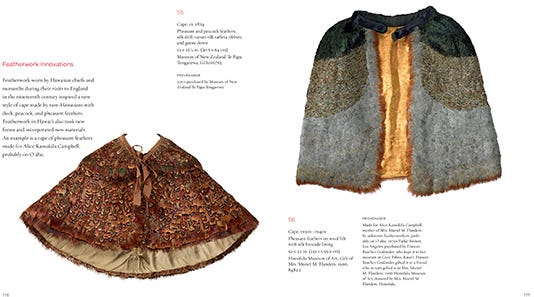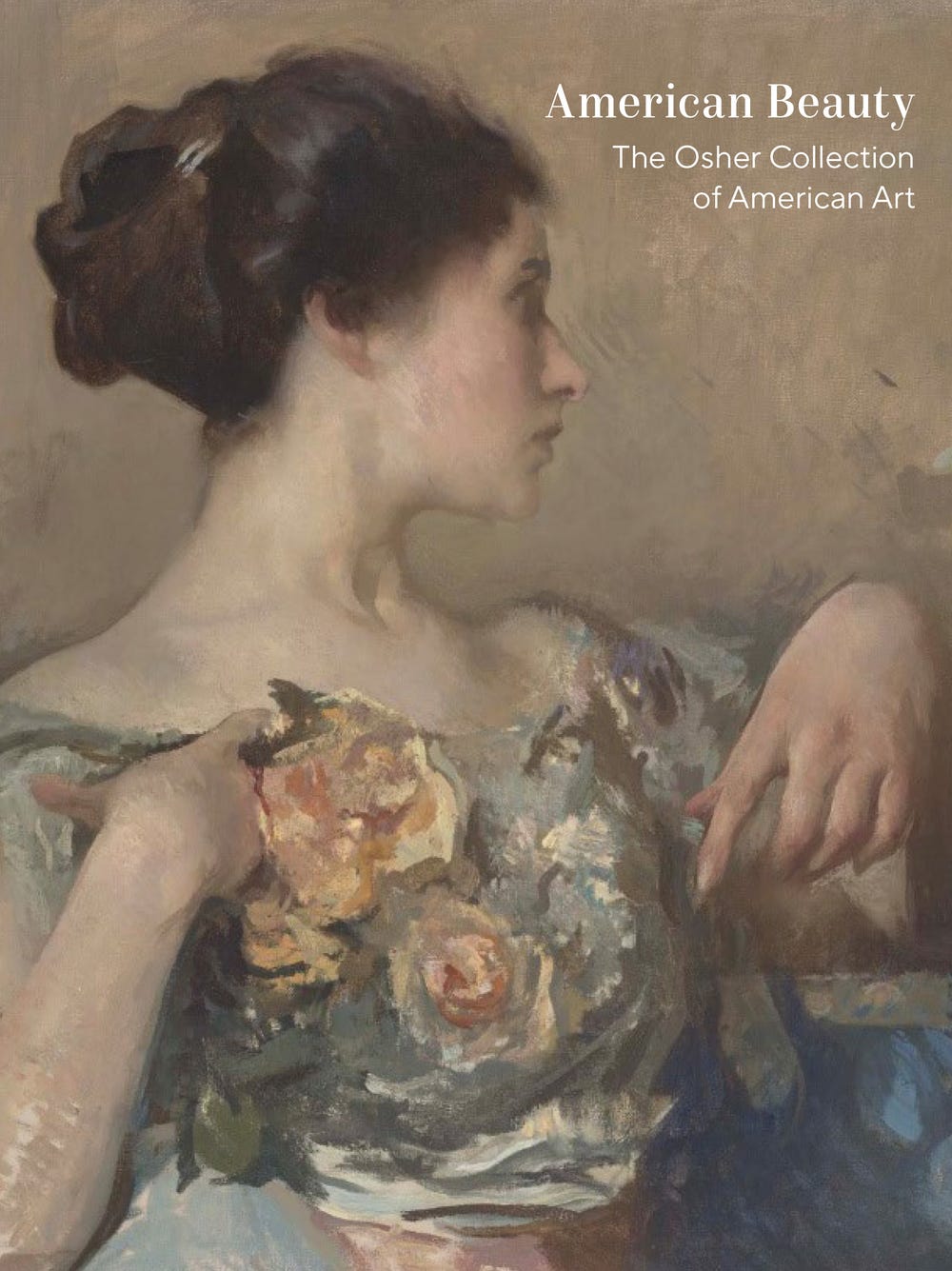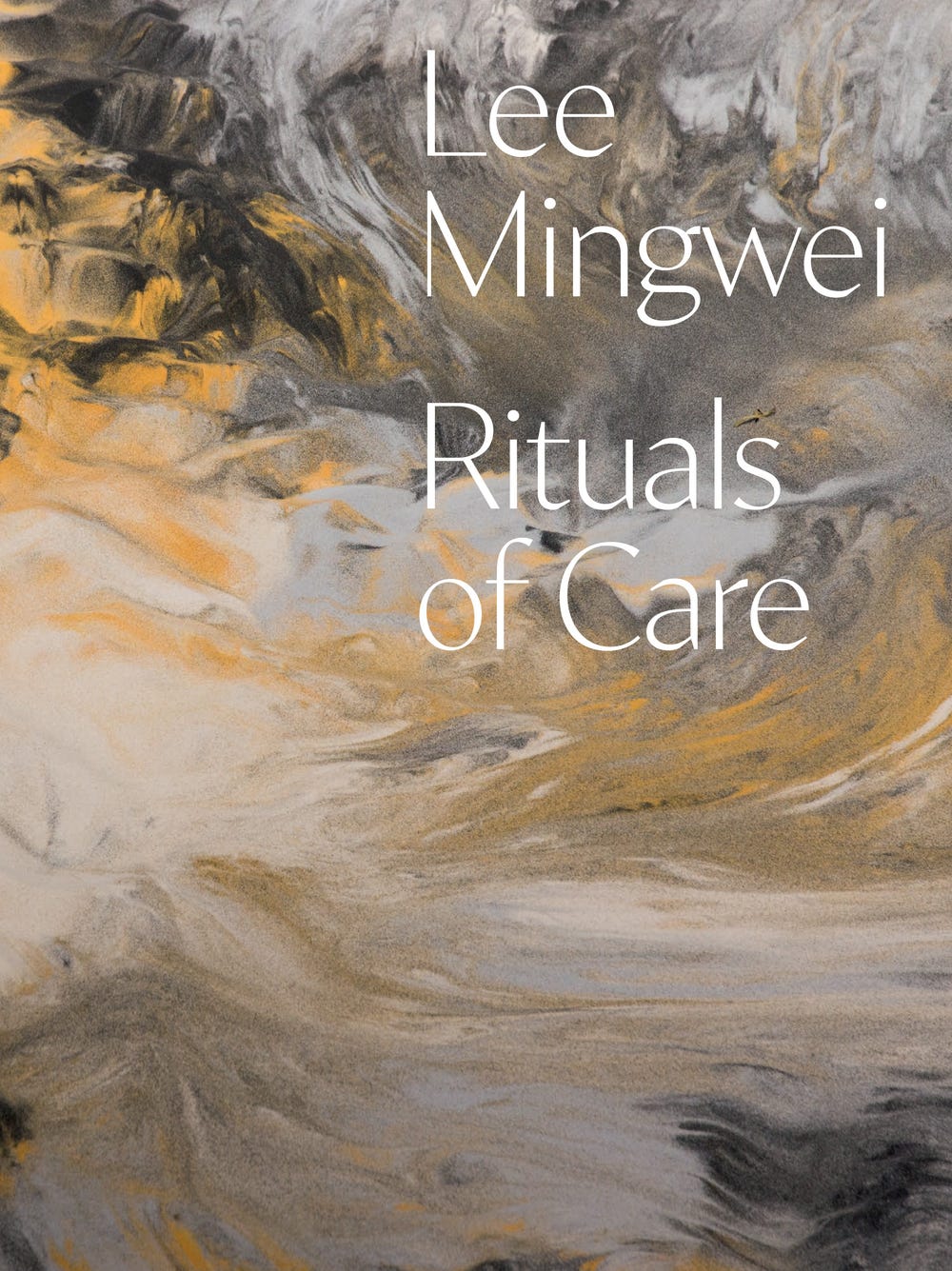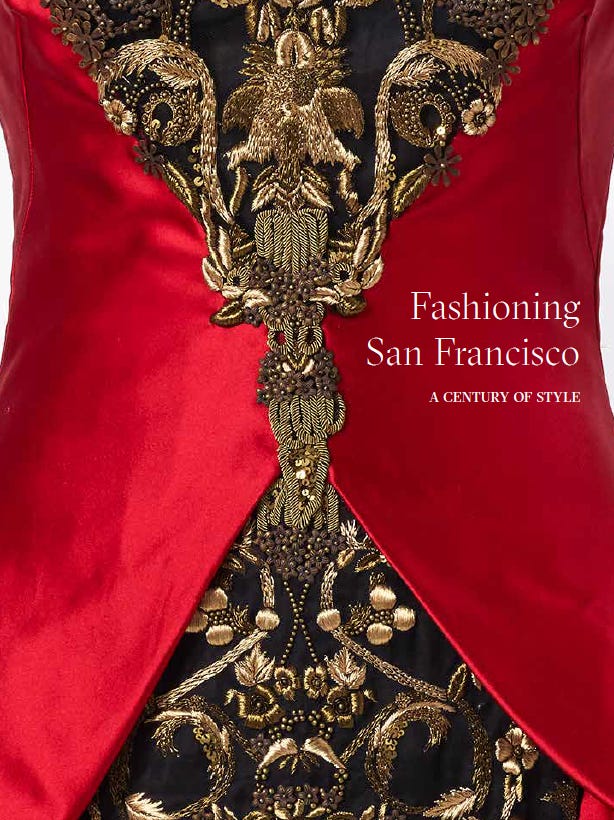Royal Hawaiian Featherwork: Nā Hulu Ali‘i
By Leah Caldeira, Christina Hellmich, Adrienne L. Kaeppler, Betty Lou Kam, Roger G. Rose, Maile Andrade, M. Kamalu du Preez, et al.
Painstakingly handcrafted using plant fiber and innumerable valuable feathers from birds of the islands, works of nā hulu ali‘i, or royal feathers, provided spiritual protection to Hawaiian chiefs for centuries while proclaiming their status and power. With their brilliant coloring and abstract compositions of crescents, triangles, circles, quadrilaterals, and lines, the works of art are both beautiful and rich in cultural significance, preserving the legacies of the islands’ powerful chiefs and monarchs
In the seventeenth and eighteenth centuries, featherwork capes and cloaks were also key items of Hawaiian diplomacy, used to secure political alliances and agreements, and they were donned as battlefield regalia, worn in conflicts and seized as spoils from defeated chiefs. Later, in the nineteenth and early twentieth centuries, featherwork—traded with and given to visitors from abroad—became symbolic of Hawaiian heritage and cultural pride.
Royal Hawaiian Featherwork: Nā Hulu Ali‘i, a catalogue accompanying a major exhibition at the de Young museum in San Francisco, documents the first comprehensive showing of Hawaiian featherwork mounted on the US mainland. It features rare and stunning examples of some of the finest extant featherwork in the world, including capes and cloaks (‘ahu‘ula), royal staffs of feathers (kāhili), feather lei (lei hulu), helmets (mahiole), and god images (akua hulu), as well as related eighteenth- and nineteenth-century paintings, works on paper, and historical photographs. A unique selection of feather garments, objects, and other works are from the royal Hawaiian collections in the Bernice Pauahi Bishop Museum in Honolulu. Through scholarly essays and poetic interludes, this lavishly illustrated book explores the central role that these sacred works of art played in the culture and history of the Hawaiian Islands, their unparalleled technical craftsmanship, and an aesthetic tradition unique to the Hawaiian archipelago.
Authors
Leah Caldeira is collections manager of the Bernice Pauahi Bishop Museum Archives, Honolulu. She oversees manuscripts, art, and other archival materials related to Hawai’i and the Pacific.
Christina Hellmich is curator in charge of Africa, Oceania, and the Americas and the Jolika Collection of New Guinea Art at the Fine Arts Museums of San Francisco. She is the coeditor of Embodiments: Masterworks of African Figurative Sculpture (2015).
Adrienne L. Kaeppler is the curator of Oceanic ethnology at the National Museum of Natural History, Smithsonian Institution, Washington, D. C. She is the author of many books, including The Pacific Arts of Polynesia and Micronesia (2008), James Cook and the Exploration of the Pacific (2009), and Hawaiian Featherwork (2010).
Betty Lou Kam served with the Bernice Pauahi Bishop Museum for thirty-four years working with primary source collections and cultural artifacts. Now retired, she is a vice-chair and commissioner for the Mayor’s Office of Culture and the Arts in Honolulu, and a board member for the Damien and Marianne Memorial Museum Foundation.
Roger G. Rose is an honorary cultural resources associate at the Bernice Pauahi Bishop Museum, where he worked from 1971 to 1999 in various roles, including curator of ethnology. He has researched Pacific Islands material culture in museums worldwide.
Maile Andrade is a multimedia artist and a professor at the Kamakakūokalani Center for Hawaiian Studies at the University of Hawai’i at Mānoa.
M. Kamalu du Preez works in the Cultural Collections department at the Bernice Pauahi Bishop Museum.
Samuel M. ʻOhukaniʻōhiʻa Gon III is a conservation biologist and an instructor of Hawaiian chant. He is the senior scientist and cultural advisor for the Nature Conservancy of Hawaiʻi.
Noelle M.K.Y. Kahanu is a writer, poet, artist, and scholar. She is currently assistant specialist of public humanities and native Hawaiian programs in the American Studies department of the University of Hawaiʻi at Mānoa.
Stacy L. Kamehiro is an associate professor in the History of Art and Visual Culture department at the University of California, Santa Cruz. She recently published The Arts of Kingship: Hawaiian Art and National Culture of the Kalakaua Era (2009).
Marques Hanalei Marzan is a Hawaiian fiber artist and cultural practitioner. He is a cultural resource specialist for the Bernice Pauahi Bishop Museum.
Noenoe K. Silva serves as professor of Hawaiian and Indigenous politics and Hawaiian language at the University of Hawaiʻi at Mānoa.
